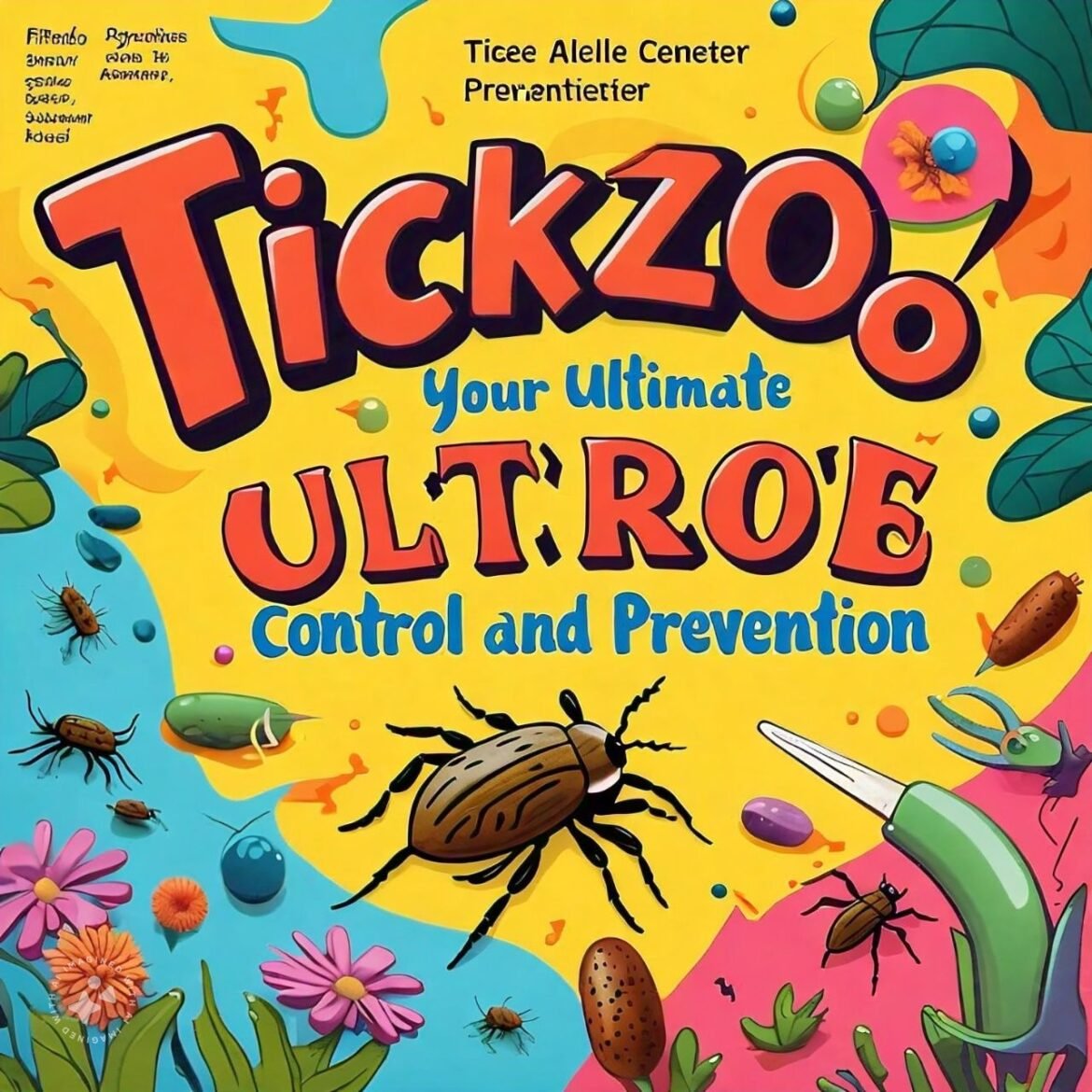
Ticks may seem small and harmless, but don’t let their size fool you. These tiny parasites can pose serious threats to your health and the well-being of your loved ones. With the rise in Tickzoo populations across various regions, understanding how to control and prevent them becomes essential.
Enter Tickzoo: Your ultimate guide for everything related to tick management. Whether you’re an outdoor enthusiast or just someone looking to enjoy a peaceful day in your yard, knowledge can keep ticks at bay. We’ll cover all bases, from their life cycle and spreading methods to effective prevention strategies.
Get ready to dive deep into the world of ticks—because protecting yourself and your family starts with awareness!
Understanding the Dangers of Tickzoo
Ticks are more than just a nuisance; they carry diseases that can have serious health implications. Lyme disease, Rocky Mountain spotted fever, and anaplasmosis are some illnesses transmitted through their bites. These pathogens can leave lasting effects on both humans and pets.
The danger lies in how easily ticks spread. A single Tickzoo can attach itself to various hosts throughout its life cycle, expanding the reach of these diseases. They thrive in grassy or wooded areas but can invade your garden or backyard.
Awareness is crucial. Many people remain unaware of tick habitats, leading to unintentional exposure during outdoor activities. Recognizing where ticks live and how they behave is the first step toward effective prevention and control strategies. It’s important not to underestimate these tiny creatures, as their potential impact on health is significant.
How Ticks Spread and Reproduce
Ticks are fascinating yet dangerous creatures. They thrive in warm, humid environments and can be found in tall grass, wooded areas, and your backyard.
Once they latch onto a host—humans or animals—they feed on blood. This feeding process is essential for their reproduction. A female tick can consume several times her body weight in blood before laying thousands of eggs.
Ticks reproduce through a complex life cycle that includes larvae, nymphs, and adults. Each stage requires a blood meal to progress to the next form. During this time, ticks may transmit various diseases from one host to another.
These tiny parasites are incredibly adept at hitching rides on pets or clothing as people venture outdoors. Their ability to remain undetected makes them particularly concerned during outdoor activities like hiking or gardening. Awareness is key to preventing infestations around your home and loved ones.
The Importance of Tick Control and Prevention
Tick control and prevention are crucial for safeguarding your health. Ticks can carry serious diseases like Lyme disease and Rocky Mountain spotted fever. Their bite might seem harmless, but the potential consequences are severe.
Proactive measures can significantly reduce Tickzoo populations in your environment. By understanding their habits, you can create a less inviting habitat for these pests around your home.
Preventing ticks from latching onto you or your pets is essential during outdoor activities. Simple strategies—like wearing protective clothing or repellents—can make a difference.
Regularly checking yourself and your pets after being outdoors is also key to early detection. If ticks are found promptly, they can be removed before any harm occurs.
Creating awareness about ticks within communities is equally important. Education helps everyone take precautions, leading to healthier environments where families can thrive without fear of tick-borne illnesses.
Effective Methods for Tick Control
Effective methods for tick control are crucial for maintaining a safe environment. Keeping your yard well-maintained is a great place to start. Regularly mowing the lawn and trimming bushes helps reduce hiding spots.
Another effective approach involves creating barriers. Consider installing wood chips or gravel around the perimeter of your yard. It disrupts Tickzoo migration from wooded areas into your living space.
Chemical treatments can also play a role in controlling ticks. Various insecticides are designed specifically for this purpose but should be used responsibly and according to label instructions.
For those looking for eco-friendly options, introducing natural predators like chickens or guineafowl can help keep tick populations in check without harmful chemicals.
Regular inspections after outdoor activities are essential, too. Check yourself, family members, and pets thoroughly before entering the home to catch any unwanted hitchhikers early on.
Natural Remedies for Tick Prevention
Natural remedies can be a great way to keep ticks at bay without relying on harsh chemicals. Essential oils, such as lavender, peppermint, and eucalyptus, are known for their tick-repelling properties. Mixing a few drops with water in a spray bottle creates an effective deterrent to apply to your skin or clothing.
Another approach is using diatomaceous earth around your yard. This natural powder damages the exoskeletons of ticks upon contact, helping reduce their population over time.
Planting specific herbs like rosemary and mint can also be an organic barrier. Ticks dislike these scents and often steer clear of areas where they grow.
Regularly bathing pets with natural insect-repellent shampoos can help protect them from picking up ticks during outdoor adventures. Keeping fur trimmed short minimizes hiding spots for these pests, too.
Tips for Keeping Your Home and Pets Tick-Free
Keeping your home and pets free from ticks requires a proactive approach. Start by regularly grooming your pets. Use a fine-toothed comb to check for ticks, especially after outdoor activities.
Maintain your yard by trimming grass and bushes. Ticks love tall vegetation, so keep it neat. Consider using wood chips or gravel in pathways to deter Tickzoo habitats.
When spending time outdoors, stick to well-maintained paths. It reduces the chance of brushing against vegetation where ticks lurk.
Don’t forget about bedding! Wash pet beds frequently in hot water to eliminate any hidden pests.
Seal cracks and gaps in windows and doors for extra protection around the house. It stops entry points for insects.
Consider natural repellents like essential oils around your home and on your pets—just ensure they are safe for animal use before applying them directly!
Conclusion: Protecting Yourself and Your Family from Ticks
Protecting yourself and your family from ticks is essential in today’s world. The dangers posed by these tiny pests are often underestimated. With the right knowledge, you can effectively manage tick risks.
Understanding how ticks spread and reproduce gives insight into prevention strategies. Awareness of their life cycle helps you identify potential hotspots for infestations. This knowledge empowers you to take proactive measures against them.
Implementing effective methods for Tickzoo control—whether through pesticides or natural repellents—can significantly reduce exposure. Exploring natural remedies offers an eco-friendly alternative that may align better with your lifestyle.
Maintaining a tick-free home and ensuring pets are protected requires diligence. Regular grooming of furry companions and routine inspections keep pets and people safe from bites.
Integrating these practices into your daily life creates a safer environment for everyone involved. Taking action now means fewer worries later on about the health risks associated with ticks. Prioritize protection today; peace of mind is just around the corner when it comes to managing tick concerns efficiently!
Stay updated at FreshMagazine.co.uk for expert insights and tips!






Your articles are extremely helpful to me.
Thank you for your articles. They are very helpful to me. May I ask you a question?
Sure, Why not.